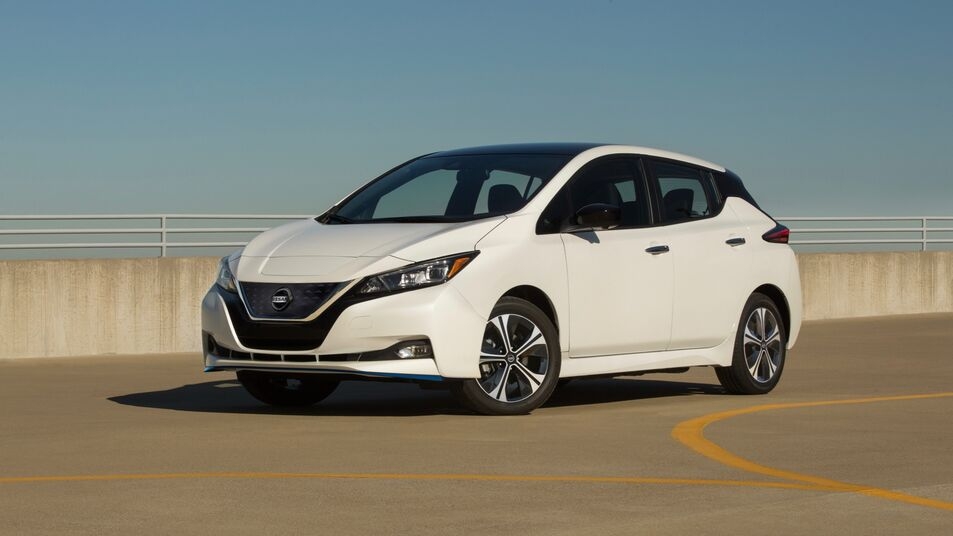A. Why Charging Time Matters for Electric Car Adoption
Picture this: you’re thinking about ditching your gas guzzler for an electric vehicle (EV), but then you wonder—how long am I going to be stuck waiting to charge this thing? That’s where charging times come in, and trust me, they’re a big deal. For a lot of folks, the switch to electric vehicles hinges on convenience. We’ve all got that range anxiety—you know, the fear of running out of juice miles away from the nearest charging station. It’s why charging speeds matter so much. According to a 2023 AAA survey, 60% of potential EV buyers worry about running out of power mid-trip. If charging takes too long, it’s no wonder people hesitate to trade in their gas tank for a battery pack. Faster charge times could be the key to making sustainable transportation a no-brainer. So, how long does it really take? Let’s find out.
B. Brief Overview of the Electric Car Charging Process
Charging an electric car battery isn’t rocket science—you plug it in, and electric power flows into the battery systems. But here’s the twist: not all chargers are the same. You’ve got Level 1 chargers using a standard household outlet, Level 2 chargers with a beefier 240-volt connection, and DC Fast Chargers that pump direct current straight into your EV battery. Think of it like coffee—Level 1 is a slow drip, Level 2 is a solid espresso, and DC Fast is a shot of nitro cold brew. Each type of charger affects how quickly you’re back on the road, and that’s what we’re digging into today.
C. Key Factors That Influence Charging Time
But wait—there’s more to it than just the charger type. How long it takes depends on stuff like battery capacity, environmental conditions (hello, cold weather!), and even your car’s onboard charger. Curious yet? Let’s break it down step by step. Want to know more, visit our website…
Types of Electric Car Chargers and Their Impact on Charging Time
A. Level 1 Chargers
1. Description and Typical Use
Level 1 chargers are the chill, no-fuss option. They plug into a 120-volt (120V) AC outlet—yep, the same standard outlet you use for your toaster. They’re slowpokes, but super handy for overnight charging at home. Got a garage and a short commute? This might be all you need.
2. Charging Speed and Time Estimates
So, how slow are we talking? Level 1 delivers about 2-5 miles of range per hour of charging. For an average-sized electric car battery—say, a 50 kWh battery—you’re looking at 20-40 hours for a full charge. That’s a whole day or two! Perfect if you’re not in a rush, but not so great if you’re late for work.
B. Level 2 Chargers
1. Description and Installation Requirements
Now, Level 2 chargers step it up. These use a 240-volt outlet—think the kind your dryer runs on—and need a bit of setup. Installing a wall box at home might cost $500-$2,000, per the U.S. Department of Energy, but it’s worth it for faster charging rates. Not up for that? You’ll find them at public locations like grocery stores or coffee shops too.
2. Charging Speed and Time Estimates
Level 2 chargers crank out 10-60 miles of range per hour, depending on the power output (usually 3.3-19.2 kW). For that same 50 kWh battery, you’re charged up in 4-10 hours. That’s a good night’s sleep, and bam—full battery levels by morning.
3. Availability at Home and Public Locations
Beyond residential applications, public charging spots like workplace charging stations or retail parks often have Level 2 options. They’re popping up everywhere—perfect for topping off while you shop.
C. DC Fast Chargers
1. Description and How They Work
Enter the speed kings: DC Fast Chargers. These beasts blast direct current into your battery pack at power levels of 50-350 kW. They’re built for rapid charging—think road trips, not lazy Sundays.
2. Charging Speed and Time Estimates
How fast? Most can get you to 60-80% in 20-30 minutes. A Tesla Supercharger or CCS connector might add 180-240 miles in that time. For our 50 kWh battery, that’s the fastest charging time you’ll see—way quicker than filling a gas tank.
3. Compatibility and Location Considerations
Heads up: not every EV plays nice with these. Tesla’s got its brand-specific charger network, while others use CHAdeMO chargers or CCS connectors. You’ll spot them at rapid charging stations along highways or in accessible locations like rest stops. Check your car’s connector types before you roll up!
Factors That Affect How Long It Takes to Charge an Electric Car
Alright, chargers are only part of the story. What else tweaks those charge times?
A. Battery Size and Capacity
1. Explanation of Battery Capacity
Bigger batteries mean more kilowatt-hours (kWh)—that’s the juice your EV battery holds. A 40 kWh battery might give you 150 miles, while an 82-kWh battery pack could push 300. More battery capacity = more driving ranges, but also more time to fill up.
2. How Larger Batteries Take Longer to Charge
It’s simple math. A 40 kWh battery might take 8 hours on a Level 2 AC charger, but a 100kWh battery? Try 20 hours. Bigger battery systems are awesome for long hauls, but patience is key.
B. State of Charge (SoC)
1. The Charging Curve and Why Charging Slows Near Full Capacity
Here’s a fun fact: charging isn’t a straight line. It’s zippy when your battery condition is low but slows down past 80%—that’s the charging curve protecting your lithium-ion batteries. Ever notice your phone does that too?
2. Optimal Charging Practices
My take? Stick to 80% for daily charging. It’s quicker, kinder to battery health, and still gives you plenty of real range. Save 100% for when you’re hitting the road hard.
C. Temperature Effects on Charging
1. Impact of Cold and Hot Weather
Weather conditions can throw a wrench in things. Cold weather slows the charging process—think 20-30% longer in freezing temps, per a 2022 study by Recurrent Auto. Hot weather? It can sap efficiency and stress your battery thermal systems.
2. Tips for Maintaining Optimal Charging Conditions
Keep your battery temperature in check. Some EVs have thermal management systems to precondition the battery factors. No fancy tech? Park in a garage or shade to dodge extreme environmental factors.
D. Onboard Charger Capabilities
1. Role of the Onboard Charger
Your car’s onboard charger is the middleman, turning AC connection power into DC for the battery charges. It’s like the bouncer at the club—only lets in what it can handle.
2. How It Can Limit Charging Speed
A 6.6-kW board charger caps your maximum charging rate, even on a beefy Level 2 charger output. An 11.5-kW onboard charger? Now we’re talking faster charging. Check this spec when shopping—I learned that the hard way!
E. Power Source and Supply
1. Differences in Power Supply and Their Effects
The power source matters too. Home chargers often use single-phase power (slower), while public chargers might tap three-phase power for more oomph. It’s all about the electricity grid you’re plugged into.
2. Home vs. Public Charging Station Power Outputs
At home, you’re looking at 3.3-7.4 kW. Public car parks or dedicated charging stations? Up to 22 kW for Level 2, or 350 kW for an ultra-rapid charger. That’s why public charging wins for speed.
Charging Time Comparison for Popular Electric Car Models
How long does it take to charge an electric vehicle like the Tesla Model 3 or Nissan Leaf? It’s not a one-size-fits-all answer—it depends on the charger type, battery size, and power output. I’ve whipped up a table with some popular models to give you the scoop on charging times. Think of it as your go-to guide for EV charging!
A. Table: Charging Times for Various Models Using Different Chargers
Here’s how long it takes to charge these EVs from empty to full, depending on the type of charger:
| Model | Battery Size | Level 1 (120V) | Level 2 (240V) | DC Fast (50-150 kW) |
| Tesla Model 3 | 50 kWh | 20-40 hours | 4-10 hours | 20-30 minutes |
| Nissan Leaf | 40 kWh | 16-32 hours | 3-8 hours | 30-45 minutes |
| Chevy Bolt | 66 kWh | 26-52 hours | 5-13 hours | 30-60 minutes |
| Ford Mustang Mach-E | 68 kWh | 27-54 hours | 5-14 hours | 30-60 minutes |
Why the big range in times? Great question! It’s all about the charger’s power output and the car’s onboard charger. A Level 1 charger uses a standard household outlet (120V) and trickles in about 4-5 miles of range per hour—super slow, like filling a gas tank with a straw! Level 2 chargers (think 240-volt outlets) kick it up to 20-40 miles per hour, depending on the kWh battery and charger (say, 7.2 kW or 11.5 kW). Then there’s DC fast charging—the speed king! It blasts direct current at 50-150 kW, juicing up your battery pack in under an hour. But here’s the catch: the maximum charging rate your car can handle matters. Tesla’s Model 3 can hit 250 kW on a good day, while the Leaf tops out at 50 kW. Wild, right?
B. Notes on Model-Specific Charging Features
Each EV has its own vibe when it comes to charging speeds. Tesla’s got a huge edge with its Supercharger network. These brand-specific chargers are everywhere—over 50,000 worldwide, per Tesla’s 2023 update—and can add 200 miles of range in 15 minutes. Road trip? No sweat! But if you’re rocking a Nissan Leaf, you’re dealing with CHAdeMO chargers. They’re slower (max 50 kW) and harder to find—only about 7,000 public spots in the U.S., according to the Department of Energy. Bummer, huh? Meanwhile, the Chevy Bolt and Ford Mustang Mach-E use CCS connectors, which are growing at public charging stations (over 15,000 U.S. locations now!). Still, Tesla’s charger infrastructure network connectivity is tough to beat. My take? If you’re all about convenience, Tesla’s the champ—but the others are catching up.
The Future of Electric Car Charging: Reducing Charging Times
What’s next for electric car charging? Spoiler: it’s getting faster and cooler. From ultra-rapid chargers to smarter battery technology, the future’s all about slashing charge times. Here’s the rundown:
A. Advancements in Charger Technology
Imagine charging your EV in less than 15 minutes. Sounds dreamy, right? Well, 350-kW DC fast chargers are making it real! Tesla’s rolling out 350kW models, and companies like ChargePoint are jumping in too. These rapid chargers pump out crazy power levels—enough to get you 200-300 miles of range while you sip a coffee at a rapid charging station. By 2024, experts predict over 5,000 350kW ultra-rapid chargers in the U.S. alone (per BloombergNEF). That’s a game-changer for sustainable transportation!
B. Innovations in Battery Technology
Batteries are leveling up too. Solid-state batteries are the buzz—they’re safer, pack more energy density, and charge in a flash. Toyota’s aiming for a 10-minute full charge by 2025, according to their 2023 press release. Plus, battery management systems are getting slicker, handling higher power requirements without frying your lithium-ion batteries. Cold weather slowing you down? New thermal management systems keep battery health in check, even at sub-zero temps. I’m betting these upgrades will make EV batteries as reliable as your phone’s charger.
C. Other Developments
Hold up—there’s more! Wireless charging is sneaking into residential applications. No cords, just park over a pad—BMW’s testing it now, aiming for 10-20 kW speeds. Then there’s vehicle-to-grid (V2G) tech. Your EV could feed electric power back to the electricity grid during peak hours, cutting your bill and helping the planet. Nissan’s already piloting this in Europe. How cool is that? It’s like your car’s a mini power source!








